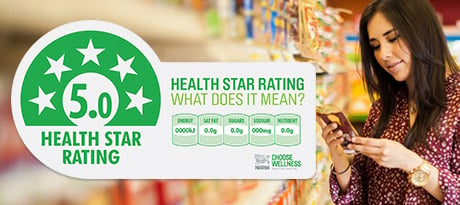Five more industry-positive studies. The score: 150/12
Higher compared with lower dietary protein during an energy deficit combined with intense exercise promotes greater lean mass gain and fat mass loss: a randomized trial. Thomas M Longland, Sara Y Oikawa, Cameron J Mitchell, Michaela C Devries, and Stuart M Phillips. Am J Clin Nutr March 2016 vol. 103 no. 3 738-746. doi: 10.3945/ajcn.115.119339
- Conclusion: Our results showed that, during a marked energy deficit, consumption of a diet containing 2.4 g protein · kg−1 · d−1 was more effective than consumption of a diet containing 1.2 g protein · kg−1 · d−1 in promoting increases in LBM [lean body mass] and losses of fat mass when combined with a high volume of resistance and anaerobic exercise.
- Conflicts of interest: SMP has received research funding, travel allowances, and honoraria from the US National Dairy Council and Dairy Farmers of Canada. None of the other authors reported a conflict of interest related to the study.
- Comment: Dairy, of course, is a source of protein.
Consumption of dairy foods and diabetes incidence: a dose-response meta-analysis of observational studies. Gijsbers L, Ding EL, Malik VS, de Goede J, Geleijnse JM, Soedamah-Muthu SS. Am J Clin Nutr. 2016 Feb 24. pii: ajcn123216. [Epub ahead of print]
- Conclusion: This dose-response meta-analysis of observational studies suggests a possible role for dairy foods, particularly yogurt, in the prevention of T2D. Results should be considered in the context of the observed heterogeneity.
- Funding: This meta-analysis project on dairy products and incident diabetes was funded by Wageningen University. SSS-M previously received funding from Global Dairy Platform, Dairy Research Institute, and Dairy Australia for projects related to dairy effects on lipoproteins and mortality; JMG previously received funding from the Global Dairy Platform and Dutch Dairy Association for projects related to dairy and cardiovascular diseases; and ELD previously consulted for the Dairy Research Institute. LG, VSM, and JdG reported no conflicts of interest related to the study. Any prior sponsors had no role in the design and conduct of the study, data collection and analysis, interpretation of the data, decision to publish, or preparation of this manuscript. The current funder had no role in design and conduct of the study, data collection and analysis, interpretation of the data, or decision to publish.
- Comment: The conclusions put a positive spin on results that can also be considered equivocal.
Plenary Lecture 2: Milk and dairy produce and CVD: new perspectives on dairy and cardiovascular health. Julie A. Lovegrove* and Ditte A. Hobbs. Proceedings of the Nutrition Society, Page 1 of 12 doi:10.1017/S002966511600001X.
- Conclusion: These apparent benefits of milk and dairy foods have been attributed to their unique nutritional composition, and suggest that the elimination of milk and dairy may not be the optimum strategy for CVD risk reduction.
- Conflicts of Interest: The authors have previously received funding for research from AHDB Dairy. J. A. L. has acted as an advisor to the Dairy Council. J. A. L. has received funding for research from Volac for BBSRC case studentship and ‘in kind’ foods from Arla for an MRC funded study.
Multivitamin/mineral supplements: rationale and safety – A systematic review. Hans K. Biesalski, Jana Tinz. Nutrition, in press 2016. doi:10.1016/j.nut.2016.02.013
- Conclusion: Taken together, these findings indicate that MVM can be safe for long-term use (more than 10 years).
- Funding: Editorial support was provided by Peloton Advantage and funded by Pfizer.
The challenges of vitamin and mineral supplementation in children with inherited metabolic disorders: a prospective trial. A. Daly, S. Evans, S. Chahal, I. Surplice, S. Vijay, S. Santra and A. MacDonald. J Human Nutrition and Dietetics. Article first published online: 18 JAN 2016. DOI: 10.1111/jhn.12354 (thanks to Cole Adams for sending).
- Conclusions: Despite improvements in some nutritional markers, overall use of the vitamin and mineral supplement was less than prescribed. New methods are needed to guarantee delivery of micronutrients in children at risk of deficiencies as a result of an essential manipulation of diet in inborn disorders of metabolism.
- Funding: Anita MacDonald has received research funding from Merck Serono, Vitaflo Ltd and Nutricia. She is on Advisory Boards for Arla, Merck Serono and Nutricia. Anne Daly and Sharon Evans have received research funding from Vitaflo Ltd, and Nutricia. Research funding was obtained from Vitaflo International for the funding of this project.





